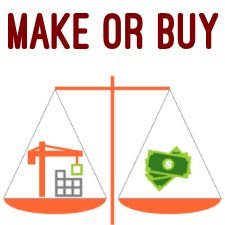Process Involved in New Product Development
Table of Contents
Process of New Product Development
Every product has a certain life period. The life-cycle of a product reveals that after a certain period, all products face the problem of obsolescence. When a product of an organization reaches the stage of obsolescence, it becomes necessary for the organization to stop its production and divert its resources in producing a new product.

The process of starting the production of a new product is called the process of new product development. It includes
- Exploration of new ideas,
- Screening of ideas,
- Business analysis,
- Product development,
- Test marketing and
- Commercialization of the product.
1. Exploration of New ideas
The process of development of anew product starts with the exploration of new ideas. There may be many sources of exploring these new ideas. Some important sources are given below:
a. Consumers
Sometimes the business and industrial enterprises invite consumers of their products and they are requested to express their opinions and give their suggestions in respect of the goods and services of the enterprise. These opinions and suggestions can be helpful in product development and product innovation. A decision taken on the basis of such a feed back can be very close to reality because it is based on the opinions of the people who actually use their products.
b. Salesmen
Salesmen are the persons who are in constant and closer touch with the consumers. The enterprise, from time to time, tries to diagnose the reasons for a decline in sales of the products of the enterprise. Opinions of the salesmen are also collected to ascertain the kind of improvements that can be made in the products to increase their demand.
c. Competitors’ Products
Competitors introduce new products in the market from time to time. They also make significant amendments in their product specialization. These product amendments may form as a guideline for the enterprise to make relevant amendments in its products.
d. Scientific Developments
Large scale industrial concerns employ their own scientists and have their own laboratories. These scientists investigate the needs and wants of the consumers and give results of such investigations to the industrialists. Their suggestions may be of great importance.
e. Universities and Government Research Laboratories
Many universities in India and research laboratories owned by the Government of India carry on continuous research. An organization can make use of the results of these researches.
f. Employees of the enterprise
This is a very important source of exploring new ideas about the products. Under this technique, the employees of the enterprise are motivated to give their suggestions and opinions for the development of their products. For this, various incentives like prizes, increment, promotion, etc., can be offered.
g. Management
Managers and executives of the organization also have their opinions and suggestions. Many decisions of product development are taken on the basis of opinions and suggestions of these executives.
2. Development of Ideas
After exploring the ideas about the development of an existing product or a development of a new one, every idea is evaluated analytically for converting them into action. An analysis includes the following:
a. Whether the idea is in accordance with the objects of the organization such as:
- Object of sales growth
- Object of maximizing profits
- Object of improving the image, etc.
b. Whether the idea can be implemented with the available resources of the organization such as:
- Technical knowledge
- Financial resources
- Plant capacity
- Managerial ability
If an idea satisfies the above factors favorably, it is selected, otherwise, it is dropped. If the ideas selected at this stage are more in number, an order is determined on the basis of their importance.
3. Business Analysis
After an idea is selected and a decision is taken to manufacture a product, an analysis is made of the product under consideration. Efforts are made to establish whether the new product will be suitable or not. Following are the three types of estimates which are necessary in this regard.
a. Estimating future sales
Efforts are made to forecast the sales of the product under consideration. Though it is very difficult to forecast the sales of a product which has not yet been developed, yet, an attempt is made in this direction.
b. Estimating future profits
After estimating the sales and costs of a product, it is easy to estimate future profits resulting from the sales of the product. It will also be considered whether these profits will provide desired rate of returns on capital invested or not. If not, the idea is dropped and if in affirmative, it is finally selected.
4. Product Development
When the idea of developing a new product comes out successfully from all the three stages discussed above, then steps are taken for the real implementation of the decision. The process of development of a product in four stages are as under:
a. Developing Model
The idea of a new product is given to the research and development department of the enterprise. The R&D develops different models for the product. The management of the organization has to select a single model for the product out of the several submitted.
b. Testing of consumers’ preference
The selection of a particular model of the product is a very important decision. A few selected consumers are invited and efforts are made to select a particular model. For this, various techniques are adopted such as pair comparison, multiple choices and ranking procedure, etc.
c. Brand name
After selecting a particular model for the product, a decision is taken regarding the brand name, registration of patent, copyright and trademark, etc.
d. Packaging
Packaging for the product is also an important decision which should be appealing to the consumers.
5. Test marketing
This is a critical stage of the process of a new product development. At this stage, the new product is marketed on a trial basis. The product is not introduced in the whole market at first instance. Some segments of the market are selected and the product is introduced in these segments only for a particular period.
The object of test marketing is to know the opinions and suggestions of consumers regarding the new product and also to know the defects of the product, if any. Test marketing provides an opportunity to the organization to remove the defects of the product before it is widely marketed.
6. Commercialization of Product
It is the last step in the process of development of a new product. It includes all the activities performed by an organization by commencing full scale production of the product, advertising and effective selling in the wider market and providing after-sale service to the consumers.




